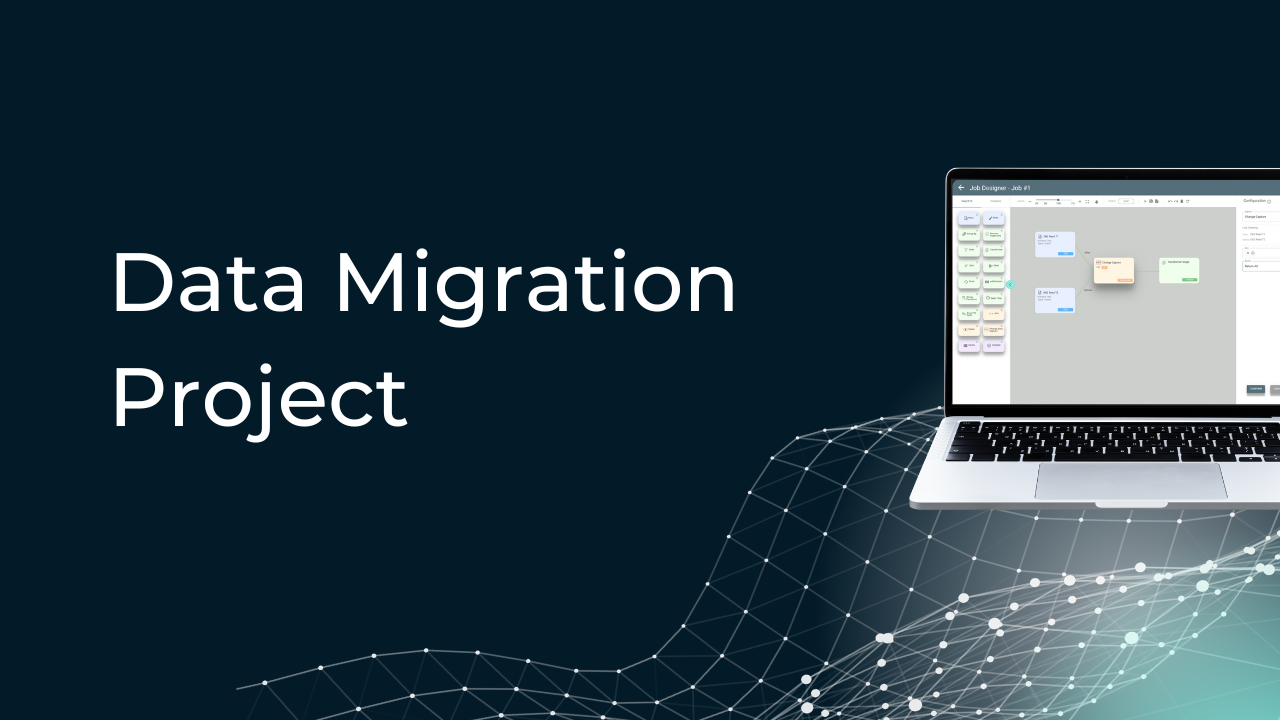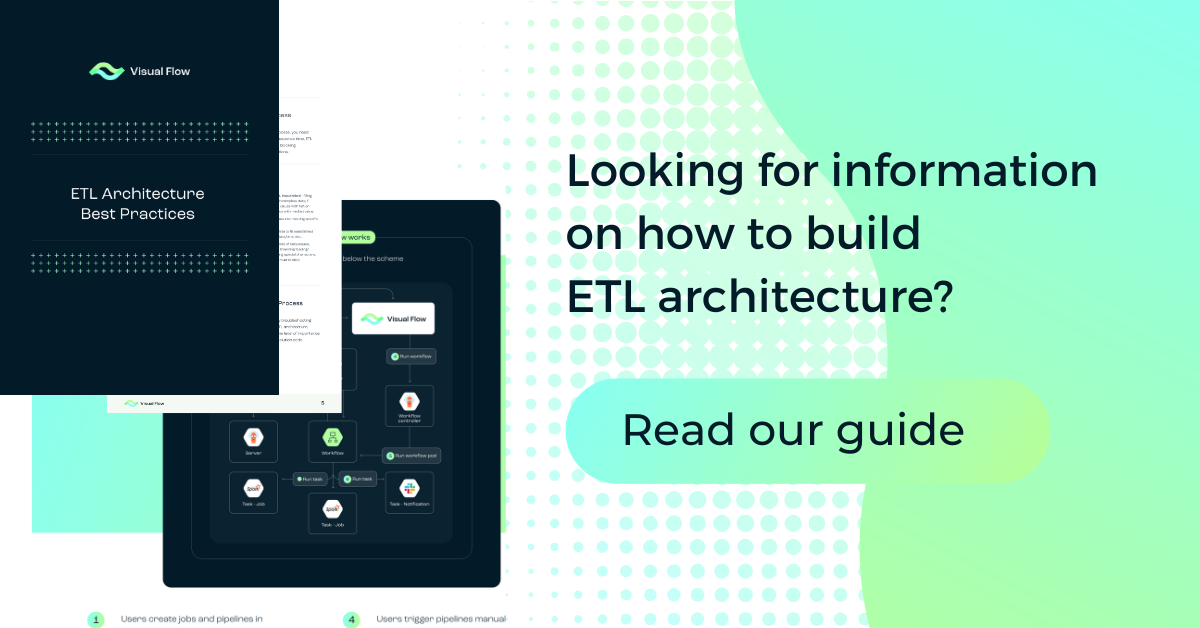
Table of Content:
Table of Content:


Data migration — like moving to a more efficient system, transitioning to the cloud, or just reorganizing data storage — has become a normal part of modern business operations. However, this seemingly straightforward task of transferring data from one place to another is often fraught with complexities and challenges. That’s why you need to have a well-structured data migration strategy.
What is Data Migration?
Data migration is the process of transferring data from different file formats, databases, or storage systems. It often requires complex processes like data mapping and re-formatting to ensure everything aligns correctly.
Common data migration examples include moving data to a new storage system or transitioning from on-premises to cloud storage. You may also need to migrate data when upgrading an application database with new hardware.
When undertaking data migration methodology, you should consider several key factors: data integrity, business impact, cost, user experience, potential downtime, data assessment, and data quality. These elements are a guarantee of successful transition.
Why is a Secure Data Migration Strategy Important?
Data migration is often driven by the need to boost the performance and competitiveness of IT operations and the organization as a whole. When data is well-organized and centralized in a single format, you can use it more efficiently, with no need for multiple systems and cutting costs.
But beware — a botched data migration can spell trouble. It leads to inaccurate data, redundancies, or other headaches that need fixing later. Even the best-organized data can be thrown into chaos by a poor migration effort.
A comprehensive data migration strategy is necessary to avoid missed deadlines, budget overruns, and incomplete plans that can derail the entire project. It ensures that all stakeholders and team members are aligned, so that tasks are completed more quickly and accurately.
And let’s not forget the big one: security and compliance. Failing to implement proper cybersecurity and regulatory measures leads to data breaches or result in fines and penalties for non-compliance.

Types of Data Migration
Here are some of the most common data migration types:
- Storage migration. It involves moving data from one storage device to another (on-premises or in the cloud). While it seems straightforward, you can’t just copy and paste massive amounts of data like 5TB. A well-thought-out plan is important as it ensures you know where the data is headed and who should have access.
- Database migration. It typically involves upgrading a database engine and transferring the entire database to a new device. It’s more complex than storage migration due to the larger volumes and different data formats. You’ll need to back up databases, detach them from the engine, migrate the files, and then restore them to the new setup.
- Application migration. It combines elements of both database and storage migrations. Moving a software application includes relocating databases, folders, and installation files to a new server. You also need to collaborate with the application vendor to ensure everything functions well post-migration.
- Wholesale vs. incremental. Beyond the technical aspects, there are strategic approaches to consider. A wholesale migration completes everything at once, while an incremental approach transfers data in phases, keeping systems online during the process. Your choice depends on your business needs and technology strategy.
Now that you understand popular data migration types, it’s time to explore the primary components involved in this process.
Key Data Migration Strategy Components
So, how to do a data migration? Starting this process without a solid plan is a recipe for disaster. Luckily, there are some tried-and-true principles to help you craft a successful data migration strategy.
- Migration planning. Start by identifying which data needs to be moved and which systems will be impacted. This involves assessing how the project will affect business stability.
- Project initiation. Set a clear start date and outline data migration steps. Identify key stakeholders and ensure everyone knows their role in the process.
- Analyze landscape. Understand how the migration fits into your broader IT ecosystem. Plan for decommissioning legacy systems.
- Design solutions. Technically map out how and where data will be moved. Implement processes to maintain data quality.
- Building and testing. Develop the software logic to automate the migration. Test everything in a sandbox environment to ensure it works well.
- Execute and validate. Prove that the migration software and processes can safely move data and are suitable for business use.
- Decommission and monitoring. Securely shut down and dispose of old legacy systems as the final step in your data migration strategies.
Integrating these elements into your data migration plan will ensure data reaches its new home safely, with minimal disruption to your business and IT operations.
Common Data Migration Challenges and Solutions
Even a solid data migration plan doesn’t guarantee trouble-free migration. Here are some common challenges to watch out for:
- Migrating bad habits. Some organizations drag along poor data, business, or IT practices during migration. Project managers may inherit broken files or data structures that cause headaches if not addressed. Make sure to leave behind any flawed processes or corrupt files when you start data migration.
- Failure to automate. Data migrations involve many moving parts. Without automation and the right software solutions, the process slows down or becomes error-prone. Use tools like a data transport engine to automatically transfer data between storage servers. This approach saves time, reduces overhead, and ensures file access permissions are maintained and updated.
- No contingency plan. One major pitfall is not having a backup plan for potential missteps. Treat data migration like moving large sums of money between banks — data is incredibly valuable. Map out potential failure points and have a contingency action plan.
To help you avoid these and other challenges and make your data migration seamless, our ETL consultant has prepared a list of best practices for data migration. Read on to learn them.

Tips to Make Your Data Migration Seamless
Moving critical information is a task that deserves careful attention. Here are some data migration best practices:
- Create and follow a detailed data migration roadmap outlining what data needs to be moved, its destination, and the method of transfer. Define who will have access to the data and outline each step of the process, including potential downtime and technical or compatibility issues. Prioritize data integrity and protection throughout your plan.
- Fully understand the data you’re migrating. Identify and separate stale, outdated, or unnecessary data for disposal to make the migration easier. Also, ensure you understand any regulated data that requires specific security controls for compliance.
- Implement migration policies. Beyond having a plan with data migration phases, establish organization-wide policies and enforcement mechanisms. Ensure data is directed to the right place and properly safeguarded post-migration. Automate policies to enhance data security and create rules for re-permissioning data during the migration.
- Test and validate migrated data. After migration, verify that everything is in its rightful place. Implement an automatic retention policy to prevent data leakage, clean up stale data, and double-check permissions. Back up old legacy systems to ensure access in a secure location if systems go offline.
- Audit and document processes. Your compliance team will appreciate thorough documentation upon completion. Depending on your industry, regulators may require proof of adequate care for sensitive data, like financial or healthcare information. Auditing the process provides a record of compliance and highlights areas for improvement in future migrations.
Use these tips as your database migration checklist. You can also take advantage of our comprehensive, high-quality data migration service to find out additional data migration techniques and receive professional consultancy.
Data Migration Tools to Automate and Simplify
These top-notch data migration tools will simplify the data migration process:
- Databricks. This data migration tool will handle all your data, analytics, and AI workloads effortlessly. Phased migration process, automation tools, scalability, and unified governance are the reasons why Databricks for ETL is so popular.
- AWS Data Migration Service (DMS). This tool supports multiple database types (Oracle, SQL Server, MySQL, PostgreSQL, etc.) and offers continuous data replication, data transformation, and automated monitoring features.
- Azure Data Factory. Its hybrid data integration feature is perfect for blending on-premises and cloud data sources. You can visualize your data flow with a code-free interface — no programming degree is required. Azure Data Factory is also highly scalable and connects to multiple data stores.
- Talend. This open-source tool offers a unified platform for real-time data integration and provides a drag-and-drop interface. Talend also connects with hundreds of data sources.
- Google Cloud Dataflow. Google Cloud Dataflow offers a unified programming model: you can write once, and run anywhere — batch or streaming. This tool automatically adjusts to handle different data volumes and integrates with other Google Cloud services like BigQuery and Cloud Storage.
- IBM InfoSphere DataStage. This tool takes any data migration system to the enterprise level. It handles large data volumes with high-performance parallel processing, offers advanced transformation and cleansing capabilities, and supports a wide range of connectors for databases, data warehouses, and applications.
These stellar data migration tools will help you automate and simplify the migration process. Choose the one that best fits your needs and watch your data migration challenges disappear.








Contact us






















































